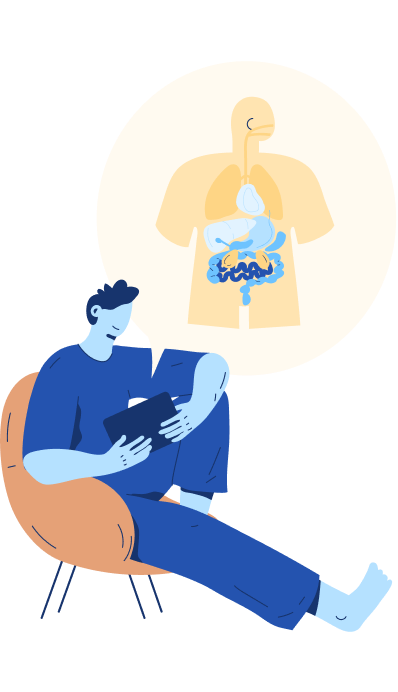Possible treatments
Self-management of BPE symptoms
You can take steps to manage your enlarged prostate symptoms and even improve them. Here are some tips that might help:
- Take your time when you go to the bathroom. Sit down and try to fully empty your bladder each time you urinate.
- Try double voiding. After you finish urinating, wait a moment, then try again. This can help empty your bladder completely.
- Use absorbent pads. Placing a pad in your underwear can soak up any leaks and help you feel more confident.
- After you’ve urinated, gently press the area under your scrotum and slide your fingers along the bottom of your penis, from the base to the tip. This helps push out any remaining drops of urine, keeping your underwear dry.
- When you feel a sudden need to urinate, try deep breathing to help calm the feeling and delay going.
- Train your bladder to hold more. Gradually try to wait a bit longer before going to the bathroom. This helps your bladder get used to holding more urine.
- Eat more fibre. Constipation can make symptoms worse, so eat more fibre to keep your bowel movements regular.
- Try bladder training. Use relaxation and muscle exercises to help wait longer between bathroom trips. For example:
- Breathe in slowly through your nose for 4 seconds, hold for 4 seconds, then exhale slowly through your mouth for 6 seconds. This can help calm the need to go.
- Focus on something else, like counting backward or listening to calming music, to take your mind off the urgency.
- Squeeze the muscles you use to stop urinating, hold for 5 seconds, then relax for 5 seconds. Repeat 10–15 times. This helps strengthen your bladder muscles over time.
- Keep a bladder diary. Write down when you go to the bathroom and note any symptoms you notice. This can help you and your doctor track changes and find the best way to manage your symptoms.
If your symptoms are mild and not bothering you much, you might choose to just simply keeping an eye on them for now. Follow this link to learn more about watchful waiting.
This chapter provides general information about benign prostate enlargement. It is not a replacement for professional medical advice or treatment. Always consult your doctor or healthcare provider for guidance on your individual medical situation.
Last updated: September 2025
Reviewed by:
- Dr. Markos Karavitakis (Guideline Panel on Non-Neurogenic Male LUTS)
- Dr. Tarik Emre Şener (YAU Working Group Endourology & Urolithiasis)

